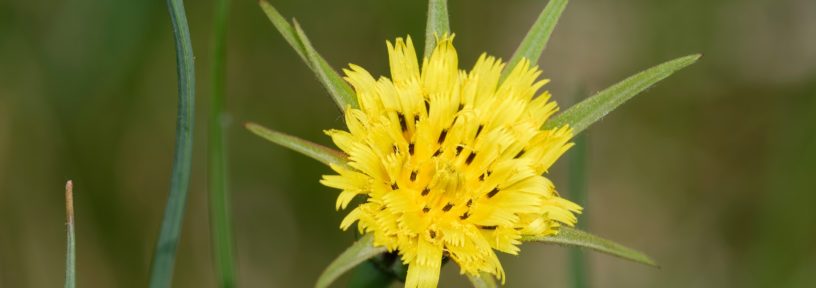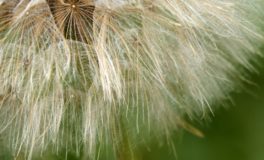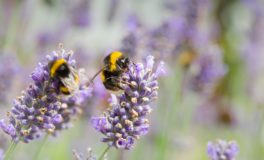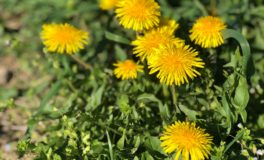Our wildflower of the week this week is Goats Beard.
Some of the wildflowers on our farms are difficult to spot – because they like shade or specific soils. But, Goats Beard is fairly unique as it chooses to flower only at certain times of day and only in good weather! So it can be difficult to find! As a result we usually find Goats Beard in our yard and at the edges of tracks.
Goats Beard is a stately member of the daisy family that stands tall and robust. The roots are parsnip like and the plants stand between 40 – 75cm tall. The yellow flower-heads are solitary with eight bracts united at the base and are usually 2-4 cm wide.
Home countries
Goats Beard, scientifically known as Tragopogon pratensis, is a fascinating wildflower found across Europe, North America, and parts of Asia. This biennial or perennial plant belongs to the Asteraceae family and is often recognised for its striking appearance and unique features. Goats Beard thrives in meadows, grasslands, and along roadsides, preferring well-drained soil and full sun exposure.
Appearance
Physically, the plant is characterised by its tall, slender stems, which can reach up to 1 meter in height. Its lance-shaped leaves are long and narrow, resembling grass blades, and are arranged alternately along the stem. Not only that but Goats Beard also produces bright yellow, dandelion-like flowers that bloom from late spring to early summer. Furthermore, these flowers, typically around 4-6 cm in diameter, open in the morning and close by midday. This characteristic has earned the plant the nickname “Jack-go-to-bed-at-noon.”
One of the most distinctive features of Goats Beard is its seed head, which resembles a giant dandelion puffball. The seed head is composed of numerous parachute-like seeds, each equipped with a feathery pappus that aids in wind dispersal. Uniquely, this structure allows the seeds to travel long distances, facilitating the plant’s spread across various habitats.
Ecological Influence
Goats Beard plays a vital role in supporting pollinators like bees, butterflies, and other insects. The plant’s flowers provide a rich source of nectar and pollen, contributing to the biodiversity of the areas it inhabits. Additionally, Goats Beard is often used in wildflower gardens and natural landscaping due to its attractive appearance and minimal maintenance requirements. Its resilience and adaptability make it a valuable component of many ecosystems.
Wildflower of the week – goats beard – One of the folk names of this plant is “John-go-to-bed-at-noon” because its stunning flowers are usually open only from four o’clock in the morning, till midday. Goats Beard flowers in June and July. The seed heads are a large “clock” of white feathery seeds around 12cm across.
The roots of this plant were once dug up and stored over winter to eat as a vegetable, and the young shoots were boiled and eaten as asparagus.

 Dealing with Dandelions
Dealing with Dandelions  15 Wildflowers Beloved By Bees
15 Wildflowers Beloved By Bees  Wildflower Of The Week – Dandelion
Wildflower Of The Week – Dandelion 

